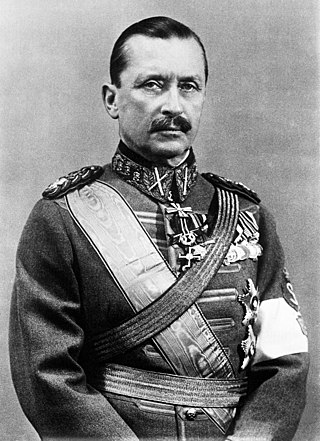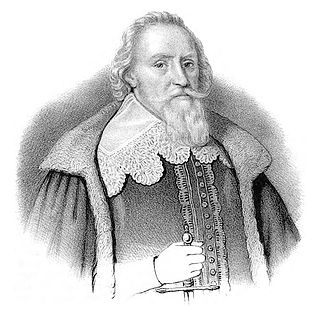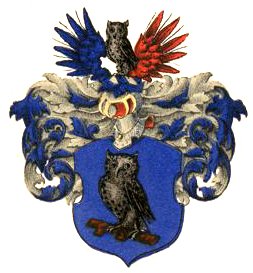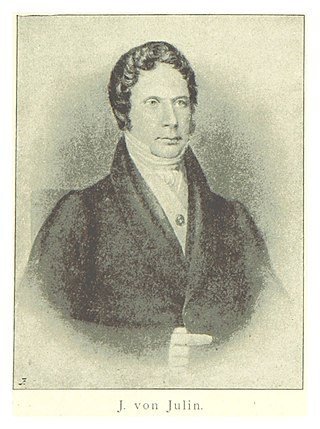


The Mannerheim family (originally Marhein) also spelled von Mannerheim is the name of a prominent noble family of German origin, which was part of Finnish, Swedish, and German nobility. [1]



The Mannerheim family (originally Marhein) also spelled von Mannerheim is the name of a prominent noble family of German origin, which was part of Finnish, Swedish, and German nobility. [1]
(number 18 in the register of the Finnish House of Nobility)
The family descends from a German businessman and mill owner, Henrik Marhein (1618–1667), who emigrated to Gävle, Sweden. His son, Augustin Marhein, was raised to the nobility in Sweden in 1693. He was introduced to the Riddarhuset as a member of the Untitled Nobility (adliga ätter), being introduced under number 1260, and with the surname Mannerheim. His son, an artillery colonel and a mill supervisor, Johan Augustin Mannerheim (1706–1778), was raised to the rank of Baron at the same time with his brother in 1768. Johan Augustin was introduced in 1776 under number 277. His son Baron Carl Erik Mannerheim came to Finland in the latter part of 18th century and the family was immatriculated in Finland in 1818. [1]
(number 8 in the register of the Finnish House of Nobility)
Baron Carl Erik Mannerheim (1759–1837) was the son of Baron Johan Augustin Mannerheim. Born in Säter, Carl Erik was part of the Anjala League, an opposition movement during the reign of Gustav III of Sweden. However, he received an amnesty and emigrated to Finland, where he purchased Louhisaari manor in 1795. In 1805, he was elected Chairman of the Finnish Economic Society. At the beginning of Russian rule in Finland, he was chairman of the delegation accounting for matters in Finland to Tsar Alexander I. [2] [3]
He served as Vice-President of the Senate of Finland's Economic Department (i.e., de facto head of government), and Governor of Turku and Pori provinces. He was also first Major of the Åbo province infantry regiment. He was given the hereditary title of Count (in Finnish Kreivi, in Swedish Greve) in 1824 and introduced in 1825. The title is inherited by the eldest son. [3]
The family was reintroduced in the Swedish nobility in 1947 and 1953.
 |  |  |  |

Baron Carl Gustaf Emil Mannerheim was a Finnish military leader and statesman. He served as the military leader of the Whites in the Finnish Civil War (1918), as Regent of Finland (1918–1919), as commander-in-chief of the Finnish Defence Forces during the period of World War II (1939–1945), and as the sixth president of Finland (1944–1946). He became Finland's only field marshal in 1933 and was appointed honorary Marshal of Finland in 1942.

The Swedish nobility has historically been a legally and/or socially privileged class in Sweden, and part of the so-called frälse. The archaic term for nobility, frälse, also included the clergy, a classification defined by tax exemptions and representation in the diet. Today the nobility does not maintain its former legal privileges although family names, titles and coats of arms are still protected. The Swedish nobility consists of both "introduced" and "unintroduced" nobility, where the latter has not been formally "introduced" at the House of Nobility (Riddarhuset). The House of Nobility still maintains a fee for male members over the age of 18 for upkeep on pertinent buildings in Stockholm.

The Governor of a province of Finland headed the activities of the State Provincial Office until the end of 2009, when the provinces were abolished. The governors were appointed by the President. Many former ministers including but not limited to Kaarlo Hillilä, Martti Miettunen, Hannele Pokka and Anneli Taina served as governors, since the post was regarded as prestigious enough for a retiring minister, but still politically neutral. The title of maaherra was also considered a personal title, such that once appointed, the title maaherra remained for life.

Johan Skytte was a Swedish statesman, and the founder of the Academia Gustaviana, in 1632.

The Gyllenhaal family is a Swedish noble family descended from cavalry officer Lieutenant Nils Gunnarsson Haal, ennobled in 1652 with a change of name to "Gyllenhaal".
Carl Gustav refers to two Kings of Sweden:

Count Carl Gustaf Mannerheim was a Finnish entomologist and governor of the Viipuri province in the Grand Duchy of Finland.

The Creutz family is a Swedish noble family with the title friherre with its roots in Swedish-governed Finland. The family, both a branch of counts and a baronial branch, continues in Finland and Sweden.

The Jägerhorn af Spurila family is a noble family, registered with number 114 in the Swedish House of Nobility and number 5 in the Finnish House of Nobility. Members of this family live in Finland, Sweden, France and the United States.

The Essen family or von Essen is the name of a Baltic German noble family which later became part of the Swedish and Russian nobility.
The Swedish comital family Adlercreutz is a part of the baronial family Adlercreutz. The general of the Swedish cavalry, cabinet minister and adjutant general Carl Johan Adlercreutz (1757-1815), who had been created a Swedish baron 30 August 1808, was created Swedish count in accordance with the 37th paragraph of the Swedish instrument of government of 1809, meaning only the head of the family possesses the title, 31 August 1814 in Uddevalla by King Charles XIII of Sweden, and was introduced at the Swedish house of the nobility 10 March 1814 as comital family number 125.

The Schantz family is a noble family of German origin in the Swedish and Finnish Houses of Nobility. They are listed as Family Number 1255 by the Swedish House of Nobility, and as Number 95 by the Finnish House of Nobility. The family was knighted in Sweden in 1693 and was immatriculated in to the Finnish nobility in 1818.

The Aminofffamily is a Swedish-Finnish noble family of Holy Roman and Russian origin.

Carl Henrik Wolter Ramsay was a Finnish politician and an economist from the Swedish People's Party. Ramsay is mostly remembered for the fact that he was sentenced in the war-responsibility trials in 1946.

Johan Erik Lindh was a Swedish painter and a former decorative painter who moved to Finland.

Count Carl Robert Mannerheim was a Finnish aristocrat and businessman. He was the son of naturalist Carl Gustaf Mannerheim, and father of Marshal Carl Gustaf Emil Mannerheim.
Carl Gustaf Emil Mannerheim (1867–1951) was a Finnish military leader and statesman.

Carl Erik Mannerheim was a Swedish–Finnish soldier, statesman and member of the Senate of Finland as its first Vice Chairman of the Economic Division, an office corresponding to that of the modern Prime Minister.

Johan (John) Jacob Julin, was a Swedo-Finnish pharmacist, factory owner and vuorineuvos. His son was Albert von Julin, a businessman and also a vuorineuvos. Through his daughter Hélène, he was also the maternal grandfather of Gustaf Mannerheim, the Marshal of Finland.

Baron Johan Mauritz Nordenstam was a Finnish general who served as Vice Chairman of the Economic Division of the Senate of Finland, an office preceding that of Prime Minister, from 1858 to his death in 1882. He was the longest-serving head of government in Finnish history. He also served as the governor of Uusimaa Province from 1847 to 1858, vice chancellor of the University of Helsinki from 1847 to 1855, and a senator without portfolio from 1848 to 1858. He briefly served as acting Governor-General five times, and was Lord Marshal (speaker) at the first three sessions of the Diet of Finland following 54 years without an assembly.